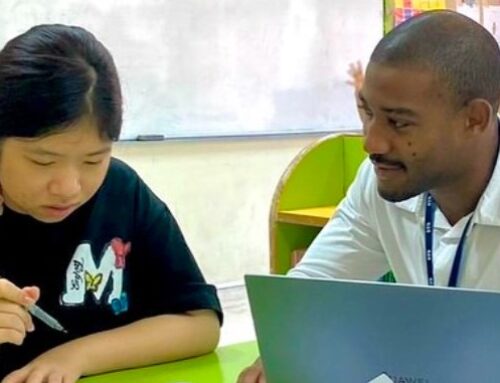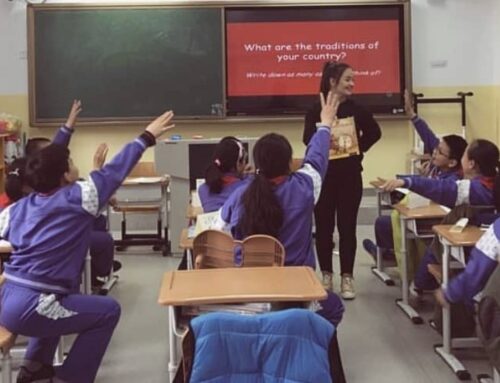By Anthony Ward
Engagement is imperative for an effective learning environment. It benefits all aspects of the classroom, especially behaviour management. One major aspect of engagement is ensuring every child in the classroom is involved and therefore focused. This blog post will look at some key techniques you can use to address all students in the classroom, engaging them into effective learning.
 Interactive Attention Grabbers
Interactive Attention Grabbers
An attention grabber is an activity or technique you can use to attract the attention of your learners. Such techniques are often used at the start of the lesson to indicate it has begun, or more frequently during the lesson when you want the children to stop what they are doing. Standing there and repeating ‘stop’ simply won’t cut it. To make this more effective, you must use interactive and simple techniques, such as saying ‘ABC’ and the children reply ‘123’. There are many variations of this, so use your imagination and see what you can come up with.
A great example that I observed was a teacher who said ‘123 eyes on me’ and the children replied ‘456 eyes are fixed’ in a rather rhythmic way. This was done with hand actions. It was interactive, fun and provoked a response from the whole class.
One of my personal favourites is the hand clap. Clap in any rhythm you want and get the children to clap the same rhythm. They have to stop and listen for it. Keep repeating this until all the students are doing it, whilst praising the children who are keeping up in time.
 Planning
Planning
Plan plan plan. Start your plan by setting a learning outcome. It is important to set direction for your lesson in order to reach your desired outcome. Planning also helps you prepare good activities suited to your chosen subject, which helps engage students and demonstrates to them that that you are knowledgeable and a good leader.
Let’s assume your objective is for learners to master all 7 continents of the world. A person who hasn’t planned would probably base their knowledge on their own experience, which may not cover all 7 continents. I say this because I watched a teacher get confused by Australia and Oceania. Once they ran out of ideas, they deviated from the objective, leaving the class confused and disengaged. This goes to show how important it is to know your stuff. Being prepared and showing that you’re knowledgeable is an important part of your role, and your students will respond to this. Planning, reading and scrolling through the Internet can bring up an array of useful resources. It gives you time to organise your lesson, create interactive group work activities and engage all students. For example, printing out the continents and getting the students to create the world map from memory can be a great team exercise.
Planning can also extend your knowledge further. You may learn what animals, food, places that these continents share that you did not know before and can incorporate it into your lesson. This would help not only meet the learning objective of the 7 continents but exceed it. It can also set you up for a follow up lesson, making the topic more detailed and teaching the students even more. Deeper learning arouses curiosity which can lead to engagement.
Get to Know What is Cool
Children believe that adults are too old for ‘cool things’ like Minecraft. Simply mentioning the word Minecraft will make the students jaw drop to the floor. Minecraft is currently very popular in China. For those who don’t know it, it’s a computer game where you build things from pixelated cubes.
Personally, I’ve never played but I know exactly who the characters Alex, Steve, Creeper, Blaze and Skeleton are. Why? Because, not only are children engaged by trends, but knowing more about the trend can extend conversations further. This can be enough to gain respect from the students, showing you understand them better, which they will respond to.
Minecraft is just one example which will soon be out of fashion, therefore it is important to keep up with the trends. See what’s on at the movies currently or update yourself on music the learners like. Also learn some slang. Your class will find it funny if you use it.
It is also worth mentioning that Mr. Bean is very popular with kids. It’s great because everyone can understand it and you’ll be surprised that there is a Mr.Bean video for a lot of topics. Use a Mr. Bean episode as either a reward or to ask questions, getting the children to describe what happened.
 Assessment
Assessment
Assessment is all about finding out whether the learners understand what they have learnt and giving feedback where needed. Studies conclude assessment to be a motivating factor that can help engage children in the short and long term. This is because you are giving them praise and reward which the children strive for, but also giving them critique into how they can improve. Both of which are engaging factors.
However, assessment can be limiting in an ESL environment because of the vast number of learners. For example, marking work is important, but with 1000 pieces of work a week, it is not reasonable for an ESL teacher. As a result, getting to know individual abilities can be difficult. On the other hand, it is likely that an ESL teacher will focus on speaking, which eliminates the need for marking. Although this still has its limitations, there are techniques you can use to implement assessment into your planning.
There are two types of assessment; formative and summative. Formative is ongoing feedback whereas summative is the likes of exams at the end of the year.
Formative is arguably the most effective in an ESL environment as it can be done throughout class by asking questions surrounding what you taught. If the students’ answers are of a good standard, then rewards should be given, and you should tell them why they did well. You can then explain how they could improve their sentence to improve learning. If they did not do well, you can then address any misunderstandings. The idea of scaffolding and seeing where the children are at and deciding how they can improve is good for informing planning and motivating to keep students engaged.
Provide Choice
We can’t expect learners to be fully independent, but by giving them the chance to make their own choices during the lesson is very engaging. PowerPoint presentations are great a way to encourage interaction and give students the chance to choose options. Examples include; learners choosing a picture and describing what they can see, choosing the colour of the sticker they would like, or what video they want to watch as a reward. You could even think big and encourage the children to choose a project based on the things you have learnt together. There are many opportunities for choice. Have a think of what choices you could implement in your classroom to help engage the children.
Use Technology
Schools buy equipment to encourage interactive learning. Technology is in everyday society, and children love it. Therefore, you should use it to enhance engagement. It is expected that you use a PowerPoint because PowerPoints can give good quality aesthetics that are important for visual learning. You can use animation on PowerPoint presentations that the children will respond well to. Linking to the idea of choice, children love being able to press buttons. Get the children up to choose a button on the screen and use animations to make it visual – enabling the students to delve into their imagination.
Ready to head over to your dream ESL destination? Explore our programs in Vietnam, Thailand, China, Cambodia or Poland or send in an application.
About the Author: Anthony Ward worked in education for 5 years, during which time he has been an ESL teacher in Beijing and Shanghai and graduated with a PGCE in Education Studies with Modern Foreign Languages. Anthony has worked closely with Impact Teaching for several years, as a Brand Ambassador, Camp Leader and content creator of many popular YouTube videos. He has extensive experience in team management and has presented many ESL lectures at universities across the UK.

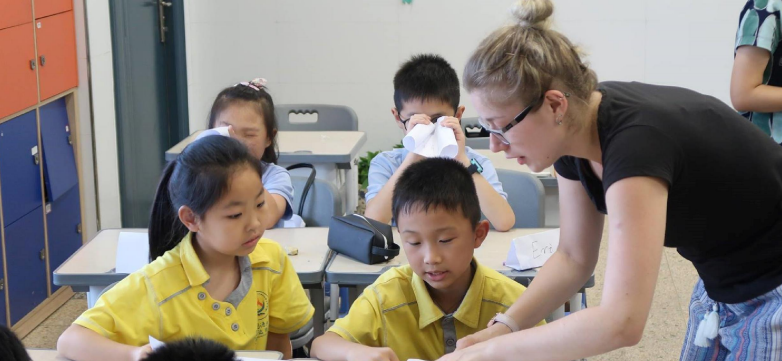
 Interactive Attention Grabbers
Interactive Attention Grabbers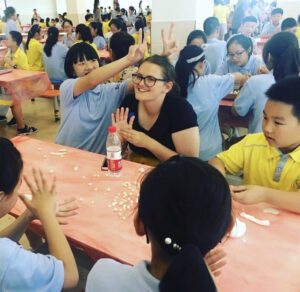 Planning
Planning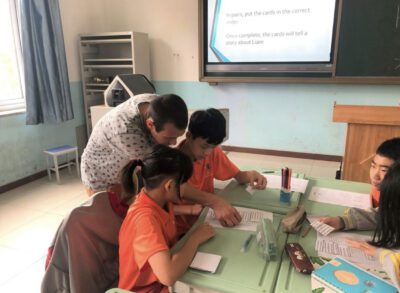 Assessment
Assessment